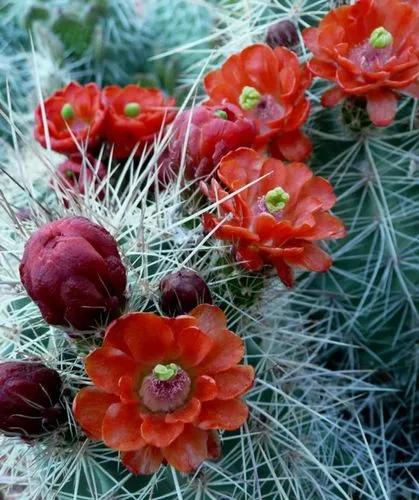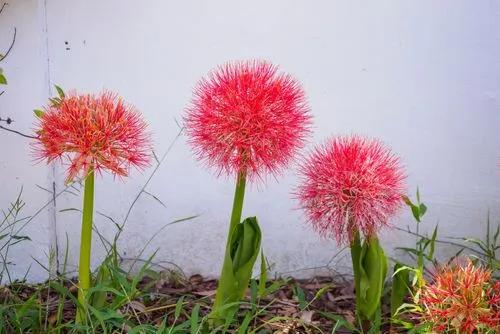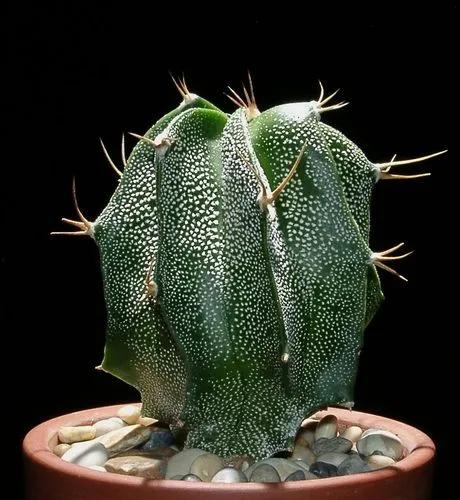Stargazers (Lilium 'Stargazer') lilies fall in the general category of oriental hybrids, which have been selectively bred from a select group of eastern Asian species, including as L. auratum, L. speciosum, and L. japonicum). Oriental lilies are known for having large bowl-shaped of flat-shaped flowers that are unusually fragrant. Stargazers and other members of this category bloom in mid- to late-summer.The 'Stargazer' hybrid is one of the most popular members of this group. It was developed in the 1970s as a cross between Lilium auratum and L. speciosum to intentionally create a flower with upward-facing rather than drooping flowers. The tips of the flowers are "reflexed"—meaning that they curve back toward the stem—and they sport long, showy stamens. They are among the most fragrant flowers there is, with a spicy aroma that some people find a little overwhelming. With a diameter of 6 inches or more, they are exceedingly showy blossoms—there is nothing subtle about Stargazers.
Stargazer Care
Lilium Orientalis 'stargazer'



How to Care for the Plant

Water

Stargazer' lilies need to be kept uniformly moist, but the bulbs may rot if allowed to soak in boggy conditions or standing water. They should be watered whenever the soil becomes dry to the touch. These plants require about 1 inch of water per week through rainfall and/ or irrigation. Watering is best done by soaking the soil to a depth of 6 inches; do not water overhead, which can damage the blossoms. Mulching will help the soil remain moist.

Pruning

Deadhead each individual flower after it is done blooming—making your cut on the small flower stalk that separates the bloom from the rest of the plant. Deadheading prevents the formation of seed pods, which consumes energy that would otherwise go to the bulbs.As with all bulb plants, you should let the plants continue to stand after blooming, for as long as the foliage remains green. Once the foliage turns completely brown, cut the plants down to the ground level.

Fertilizer

Like many plants with large, dramatic flowers, Stargazers are heavy feeders. For best performance, apply a generous amount of 10-10-10 fertilizer in the early spring after the shoots have emerged, then supplement with smaller feedings every few weeks through the growing season. Water deeply after each feeding. Where soil conditions are not ideal, feeding with an acid fertilizer, such as a formulation designed for azaleas, will help Stargazers thrive.

Sunlight

Stargazers do best in full sun (8 hours per day) but will tolerate part shade. Shady locations will cause the stems to get leggy and overly long, which may require staking that is not necessary when they are planted in sunnier locations.

Soil

Oriental lilies such as Stargazers do well in any medium soil with average moisture. They prefer slightly acidic soils but grow fine in neutral soils. Feeding with an acid fertilizer helps them thrive in neutral or alkaline soils.

Temperature

Lilies do well across all climate conditions found in their hardiness zone range, provided soil conditions are suitable, but they truly thrive in hot conditions. Maximum bloom is achieved in midsummer conditions where temperatures consistently reach 80 to 90 degrees F., such as is common in hardiness zones 8 and 9.

Container

Stargazers are sometimes grown indoors in pots, and the bulbs may be "forced" to bloom at Mother's Day or other holidays. Plant them in pots at least 6 inches wide, in potting soil heavy with organic material and a pH of 6.3 to 6.5—a potting soil heavy in peat moss is naturally acidic and makes a good choice. A mixture of 3 parts garden soil, 2 parts peat moss, and 1 part sand makes a good growing medium for potted lilies.Lilies grown indoors are usually smaller, and they require relatively warm conditions—68 to 85 degrees F. during the day and no lower than 60 degrees at night. Grow them in conditions that are as bright as possible.

Additional

Many lilies, including Stargazers, are toxic to cats, though harmless to people and dogs. Even small ingestion (two or three leaves) can cause fatal kidney or liver failure in cats. Avoid growing the plant indoors if you have cats. Treatment by a veterinarian may include flushing the stomach, followed by IV fluids.

Popularity

406 people already have this plant 98 people have added this plant to their wishlists
Discover more plants with the list below
Popular articles






